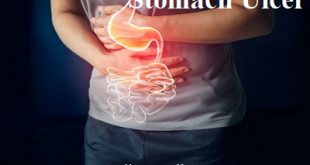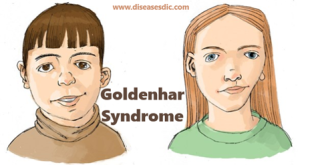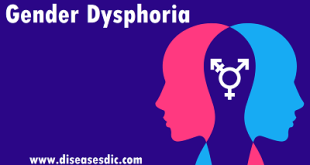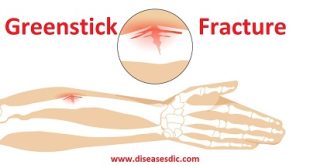Definition
Gallstones, or choleliths, are solid masses formed from bile precipitates. These “stones” may occur in the gallbladder or the biliary tract (ducts leading from the liver to the small intestine). There are two types of gallstones: cholesterol and pigment stones. Both types have their own unique epidemiology and risk factors.
Illustration showing gallbladder and gallstone
- Cholesterol stones
Cholesterol stones are yellow-green and are primarily made of hardened cholesterol. Cholesterol stones, predominantly found in women and obese people, are associated with bile supersaturated with cholesterol. They account for 80% of gallstones and are more commonly involved in obstruction and inflammatory.
- Pigment stones
Pigment stones may be black or brown stones. Black pigment stones are made of pure calcium bilirubinate or complexes of calcium, copper, and mucin glycoproteins. These gallstones typically form in conditions of stasis (e.g., parenteral nutrition) or excess unconjugated bilirubin (e.g., hemolysis or cirrhosis). Black pigment stones are more likely to remain in the gallbladder. Brown pigment stones are composed of calcium salts of unconjugated bilirubin with small amounts of cholesterol and protein. These stones are often located in bile ducts causing obstruction and are usually found in conditions where there is infected bile.
Epidemiology and Prevalence
Gallstones are common with prevalence’s as high as 60% to 70% in American Indians and 10% to 15% in white adults of developed countries. Ethnic differences abound with a reduced frequency in black Americans and those from East Asia, while being rare in sub-Saharan Africa. Certain risk factors for gallstones are immutable: female gender, increasing age, and ethnicity/family (genetic traits). Others are modifiable: obesity, the metabolic syndrome, rapid weight loss, certain diseases (cirrhosis and Crohn disease), gallbladder stasis (from spinal cord injury or drugs, such as somatostatin), and lifestyle.
Who is at risk for gallstones?
- Women are more likely to develop gallstones than men. Extra estrogen can increase cholesterol levels in bile and decrease gallbladder contractions, which may cause gallstones to form. Women may have extra estrogen due to pregnancy, hormone replacement therapy, or birth control pills.
- People over age 40 are more likely to develop gallstones than younger people.
- People with a family history of gallstones have a higher risk.
Other factors that affect a person’s risk of gallstones include:
- People who are obese, especially women, have increased risk of developing gallstones. Obesity increases the amount of cholesterol in bile, which can cause stone formation.
- Rapid weight loss. As the body breaks down fat during prolonged fasting and rapid weight loss, the liver secretes extra cholesterol into bile. Rapid weight loss can also prevent the gallbladder from emptying properly. Low-calorie diets and bariatric surgery—surgery that limits the amount of food a person can eat or digest—lead to rapid weight loss and increased risk of gallstones.
- Diets high in calories and refined carbohydrates and low in fiber increase the risk of gallstones. Refined carbohydrates are grains processed to remove bran and germ, which contain nutrients and fiber. Examples of refined carbohydrates include white bread and white rice.
- Certain intestinal diseases. Diseases that affect normal absorption of nutrients, such as Crohn’s disease, are associated with gallstones.
- Metabolic syndrome, diabetes, and insulin resistance. These conditions increase the risk of gallstones. Metabolic syndrome also increases the risk of gallstone complications. Metabolic syndrome is a group of traits and medical conditions linked to being overweight or obese that puts people at risk for heart disease and type 2 diabetes.
Causes
It’s not clear what causes gallstones to form. Doctors think gallstones may result when:
- Your bile contains too much cholesterol. Normally, your bile contains enough chemicals to dissolve the cholesterol excreted by your liver. But if your liver excretes more cholesterol than your bile can dissolve, the excess cholesterol may form into crystals and eventually into stones.
- Your bile contains too much bilirubin. Bilirubin is a chemical that’s produced when your body breaks down red blood cells. Certain conditions cause the liver to make too much bilirubin, including liver cirrhosis, biliary tract infections and certain blood disorders. The excess bilirubin contributes to gallstone formation.
- Your gallbladder doesn’t empty correctly. If your gallbladder doesn’t empty completely or often enough, bile may become very concentrated, contributing to the formation of gallstones.
Complications
- Inflammations of the gallbladder (cholecystitis), the biliary tract (cholangitis), and the pancreas (biliary pancreatitis).
- Persistent pain, fever, and jaundice indicating acute cholangitis are known as Charcot’s Triad.
- Gallbladder cancer is rare but closely related to gallbladder stones, nevertheless for cancer prevention, prophylactic cholecystectomy is not recommended.
Symptoms
Most cases of gallstones don’t cause any symptoms. But if a gallstone blocks one of the bile ducts, it can cause sudden, severe abdominal pain, known as biliary colic.
Abdominal pain (biliary colic)
Gallstones can cause sudden, severe abdominal pain that usually lasts one to five hours (although it can sometimes last just a few minutes).
The pain can be felt:
- In the centre of your abdomen (tummy)
- Just under the ribs on your right-handside – it may spread from here to your side or shoulder blade
In a small number of people, gallstones can cause more serious problems if they obstruct the flow of bile for longer periods or move into other organs (such as the pancreas or small bowel).
If this happens, you may develop:
- A high temperature of 38C (100.4F) or above
- More persistent pain
- A rapid heartbeat
- Yellowing of the skin and whites of the eyes (jaundice)
- Itchy skin
- Diarrhoea
- Chills or shivering attacks
- Confusion
- A loss of appetite
Diagnosis of gallstones
Laboratory Tests
Biochemical tests of liver function are abnormal only when there are complications of gallstones. In acute cholecystitis, there may be leukocytosis with a “left” shift. Gallstones cause acute pancreatitis with concomitant elevations in the amylase and lipase levels. Gallstones causing obstruction of the common bile duct will result in elevations of hepatic transaminases and alkaline phosphatase.
Radiological Studies
Most gallstones, especially those that are asymptomatic, are incidentally discovered when patients are undergoing imaging for other problems. In situations where the index of suspicion for uncomplicated gallstones is high based on a patient’s history and physical exam, there are noninvasive and invasive procedures available. These procedures are used to determine the presence or absence of gallstones as well as their location in the gallbladder and/or biliary tree.
Ultrasonography
The best noninvasive test for detecting gallstones in the gallbladder is abdominal ultrasonography because of its high specificity and sensitivity (90–95%).
CT scan
- Detection of calculous disease may employ computed tomography (CT) scanning. CT scans are useful in demonstrating masses and dilated biliary ducts, although they are not as reliable for the diagnosis of calculous disease.
- Their principle use is detection of the complications of gallstones such as pericholecystic fluid, gas in the gallbladder wall, gallbladder perforations, and abscesses. These noninvasive tests may help determine which patients will require urgent surgical intervention
Endoscopic Diagnosis: Endoscopic Retrograde Cholangiopancreatography (ERCP)
- ERCP is the gold standard for the detection of gallstones in the common bile duct and has the advantage of being the therapeutic modality of choice for removing bile duct stones.
- ERCP is an endoscopic technique for visualization of the bile and pancreatic ducts. During this procedure, the physician places a side-viewing endoscope (duodenoscope) in the duodenum facing the major papilla.
- The duodenoscope is specially designed to facilitate placement of endoscopic accessories into the bile and pancreatic duct.
- The endoscopic accessories may be passed through the biopsy channel into the bile and pancreatic ducts.
- A catheter is used to inject dye into both pancreatic and biliary ducts to obtain x-ray images using fluoroscopy.
MRI and MRCP
- Magnetic resonance cholangiopancreatography (MRCP) is a relatively new application that utilizes MRI imaging with special software. It is capable of producing images similar to ERCP without the accompanying risks of sedation, pancreatitis, or perforation.
- MRCP is helpful in assessing biliary obstruction and pancreatic ductal anatomy. It has been shown to be effective in detecting gallstones and to evaluate the gallbladder for the presence of cholecystitis.
Oral Cholecystography
- Oral cholecystography is another noninvasive test, although it is infrequently performed. In preparation for this procedure, the patient must ingest a dose of an oral contrast agent on the evening before the test. This contrast is absorbed and secreted into the bile. The iodine in the contrast produces opacification of the gallbladder lumen on a plain radiograph the next day.
- Gallstones appear as filling defects. The main use of oral cholecystography is to establish patency of the cystic duct. This information is required before attempting lithotripsy or medical methods to dissolve gallstones.
- A major drawback of oral cholecystography is that it takes 48 hours to perform.
Cholescintigraphy
- Cholescintigraphy employs the use of an intravenous radioactive iminodiacetic acid derivative. This labeled derivative is rapidly absorbed by the liver and excreted into the bile.
- Serial scans demonstrate the radioactivity in the gallbladder, common bile duct, and small bowel within 30–60 minutes.
- A nonfunctioning gallbladder is diagnostic of acute cholecystitis.
- Cholescintigraphy may be useful in determining whether empiric cholecystectomy will benefit a patient with chronic biliary pain without gallstones.
- Prolonged fasting and acute cholecystitis can result in false-positive results.
How are gallstones treated?
The usual treatment for gallstones is surgery to remove the gallbladder. If a person cannot undergo surgery, nonsurgical treatments may be used to dissolve cholesterol gallstones. A health care provider may use ERCP to remove stones in people who cannot undergo surgery or to remove stones from the common bile duct in people who are about to have gallbladder removal surgery.
Surgery
Surgery to remove the gallbladder, called cholecystectomy, is one of the most common operations performed on adults. Once the gallbladder is removed, bile flows out of the liver through the hepatic and common bile ducts and directly into the duodenum, instead of being stored in the gallbladder. Surgeons perform two types of cholecystectomy:
- Laparoscopic cholecystectomy
- In a laparoscopic cholecystectomy, the surgeon makes several tiny incisions in the abdomen and inserts a laparoscope – a thin tube with a tiny video camera attached.
- The camera sends a magnified image from inside the body to a video monitor, giving the surgeon a close-up view of organs and tissues.
- While watching the monitor, the surgeon uses instruments to carefully separate the gallbladder from the liver, bile ducts, and other structures.
- Then the surgeon removes the gallbladder through one of the small incisions. Patients usually receive general anesthesia.
- Open cholecystectomy
- An open cholecystectomy is performed when the gallbladder is severely inflamed, infected, or scarred from other operations.
- In most of these cases, open cholecystectomy is planned from the start. However, a surgeon may perform an open cholecystectomy when problems occur during a laparoscopic cholecystectomy.
- To perform an open cholecystectomy, the surgeon creates an incision about 4 to 6 inches long in the abdomen to remove the gallbladder.
- Patients usually receive general anesthesia. Recovery from open cholecystectomy may require some people to stay in the hospital for up to a week.
- Normal physical activity can usually be resumed after about a month.
Nonsurgical Treatments for Cholesterol Gallstones
Nonsurgical treatments are used only in special situations, such as when a person with cholesterol stones has a serious medical condition that prevents surgery. Gallstones often recur within 5 years after nonsurgical treatment. Two types of nonsurgical treatments can be used to dissolve cholesterol gallstones:
- Oral dissolution therapy
- Ursodiol (Actigall) and chenodiol (Chenix) are medications that contain bile acids that can dissolve gallstones.
- These medications are most effective in dissolving small cholesterol stones.
- Months or years of treatment may be needed to dissolve all stones.
- Shock wave lithotripsy
- A machine called a lithotripter is used to crush the gallstone.
- The lithotripter generates shock waves that pass through the person’s body to break the gallstone into smaller pieces.
- This procedure is used only rarely and may be used along with ursodiol.
Prevention and management of Gallstones
- Diet may play a role in gallstones. Specific dietary factors may include:
- Although fats (particularly saturated fats found in meats, butter, and other animal products) have been associated with gallstone attacks, some studies have found a lower risk for gallstones in people who consume foods containing monounsaturated fats (found in olive and canola oils) or omega-3 fatty acids (found in canola, flaxseed, and fish oil). Fish oil may be particularly beneficial in patients with high triglyceride levels, because it improves the emptying actions of the gallbladder.
- High intake of fiber has been associated with a lower risk for gallstones.
- Studies suggest that people may be able to reduce their risk of gallstones by eating more nuts (peanuts and tree nuts, such as walnuts and almonds).
- Fruits and Vegetables. People who eat a lot of fruits and vegetables may have a lower risk of developing symptomatic gallstones that require gallbladder removal.
- High intake of sugar has been associated with an increased risk for gallstones. Diets that are high in carbohydrates (such as pasta and bread) can also increase risk, because carbohydrates are converted to sugar in the body.
- A few studies have reported a lower risk for gallstones with alcohol consumption. Even small amounts (1 ounce per day) have been found to reduce the risk of gallstones in women by 20%. Moderate intake (defined as 1 – 2 drinks a day) also appears to protect the heart.
- Research suggests that drinking coffee every day can lower the risk of gallstones.
Preventing gallstones during weight loss
- Maintaining a normal weight and avoiding rapid weight loss are the keys to reducing the risk of gallstones.
- Taking the medication ursodiol (also called ursodeoxycholic acid, or Actigall) during weight loss may reduce the risk for people who are very overweight and need to lose weight quickly.
 Diseases Treatments Dictionary This is complete solution to read all diseases treatments Which covers Prevention, Causes, Symptoms, Medical Terms, Drugs, Prescription, Natural Remedies with cures and Treatments. Most of the common diseases were listed in names, split with categories.
Diseases Treatments Dictionary This is complete solution to read all diseases treatments Which covers Prevention, Causes, Symptoms, Medical Terms, Drugs, Prescription, Natural Remedies with cures and Treatments. Most of the common diseases were listed in names, split with categories.








please have been troubling with stomach pain since 2month ago
and I think is the gallstones problem how can I actually treat it without surgery
First get diagnosed with gastrointestinal doctor to know about the size of gallstones. If the size is too smaller then you can opt for medication or if the size is larger definitely you should go for a small surgery. But surgery is the curable treatment for gallstones throughout your life.
i. have. pain. in. my. stomach. together. with. under my. 2. ribs. breasts. pain. goes. untill. my. back. what. illnes. is. this. im suppering?
Please consult with a Gastroenterologist as soon as possible to reduce the risk of developing gallstones.
My mum has been diagnosed with gallstones but doesn’t want to go through surgery.
Worries over the consequence of losing the gallbladder, the risk during and after the surgery. Wants to know whether the oral treatment (actigall) is effective and advisable?
consult a doctor to take medications.
I’ve removed the gallbladder now it’s five years later am worried did i get the liver disease in my life??
Please consult a doctor.
Hi, I removed my gallbladder just before few months. Please tell the diet chat and other instructions. I’m mother for 8 months baby. And also say about normal working hours in home. I want to know about, what kind of food will be taken. Pls tell about the any exercise. And also any precautions.
Please consult a Nutritionist for a proper diet plan and consult a doctor.
I am24 years old I am student of MBA my final exam starts from 16th may 19 I am suffering from gallbladder stone pain what should I do for 15 days exam pd medication before surgery tell me food and liquids which can itake pl help me
please consult a doctor to get a pain-relieving medicine until you complete with your exams. After that kindly get a treatment completely either through medications or surgery.
in 2% gall bladder case and I have phobia for surgery,Can the non surgical method be used?
There are medications which can dissolve gallstones without surgery. But these drugs may take months or even years to dissolve the stones. Medication is not a permanent solution for gallstones.
please sir where can see the doctor know about gallbladder that can give me medication.
To seek medical advice for gallbladder-related concerns, you can start by scheduling an appointment with a general practitioner or a gastroenterologist. Contact your primary care physician for a referral or directly schedule a consultation with a gastroenterologist, a specialist in digestive system disorders. You may find a suitable healthcare provider through local clinics, hospitals, or online healthcare directories. Explain your symptoms and seek their guidance for proper diagnosis and treatment options for gallbladder issues.